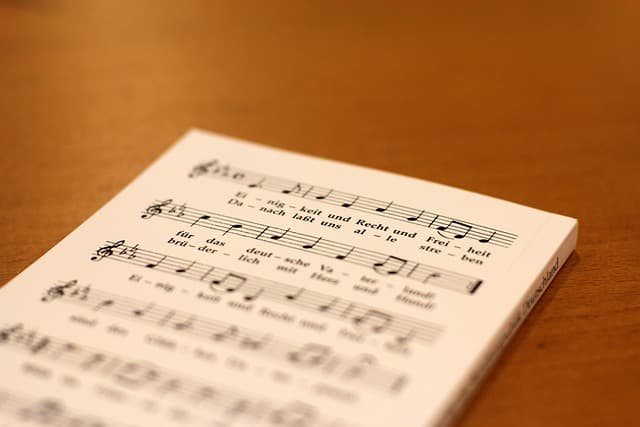Anthems are not just musical compositions. They are crucial symbols that unite nations, countries, cities, and various organizations. They are heard at sports events, state occasions, and cultural celebrations. However, the process of creating an anthem, from the initial idea to its official approval, is not always a quick and simple procedure. In this article, we will explore how anthems are created, from the first steps to the final approval.
The Role of the Anthem in Culture and Society
An anthem is a musical composition that carries an official character and expresses symbolic significance for a state, society, or organization. It can convey the spirit of a nation, its historical heritage, and cultural traditions. In many countries, the anthem is an important part of national identity and is used at various ceremonial moments.
Anthems can be national, regional, or organizational. National anthems are typically approved at the state level and symbolize the unity of the people, history, and values. In Slovenia, for example, the anthem is called “Zdravljica” and was written in the late 19th century. This composition embodies freedom, brotherhood, and the desire for peace.
Stages of Creating an Anthem
The creation of an anthem typically begins with the idea or need for a new piece of music. Sometimes the process can be spontaneous, while in other cases it is preceded by long discussions and analysis. Often, the decision to create an anthem is made at the state level, which may involve discussions in cultural ministries or government bodies. This process can be accompanied by lively debates and attempts to find the most vibrant and expressive way to reflect the country’s culture.
It is not uncommon for such discussions to lead to innovative ideas and creative approaches, which may reflect the contemporary world. For instance, in today’s rapidly changing world, where online entertainment, including online casinos, is becoming increasingly popular, it is important to create anthems that could resonate with new generations. The anthem not only plays at official ceremonies but can also become part of the cultural background against which people interact and entertain themselves, whether at sports events or through mass hobbies like gaming platforms.
Once the contest is over and a winner is chosen, the next step is refining the piece. The anthem’s lyrics may be adapted for better sound in official settings, and the musical part may undergo further refinement and improvement. This is important because the anthem must sound solemn, be easily recognizable, and pleasant to listen to.
If you want to immerse yourself in the world of online casinos with thrilling games from top global developers, slovenskecasino.net is the place to visit. Here you will find only verified and reliable platforms offering a wide variety of games for every taste. Whether you’re looking for classic slots, table games, or something new, this site has casinos that match your preferences perfectly. Bonus programs and attractive conditions will make your experience not only exciting but also profitable, opening unique opportunities for large wins.
Official Approval of the Anthem
The process of official approval of an anthem can take considerable time. Once the piece is ready, it is presented for discussion to government or legislative bodies. In some countries, the approval of an anthem requires a vote in parliament, while in others it requires a decision from high authorities such as the president or prime minister. It is essential that the anthem not only meets aesthetic requirements but also aligns with legal and political expectations.
Legislative bodies may request additional changes, especially if they believe the anthem could cause public discontent or does not fully reflect the values of the nation. In the case of national anthems that are to be performed at international events, such as sports competitions or cultural exchanges, it is also important to ensure that the composition is capable of representing the country on the global stage.
Once the anthem is approved, it begins its official publication. At this point, the anthem becomes not only a symbol but also an official piece that will be performed at numerous celebrations, holidays, and public events.
The History of Anthem Creation in Slovenia
Slovenia, like many other countries, has its own unique history of anthem creation. The national anthem of Slovenia, “Zdravljica,” was written by poet France Prešeren in 1844 and remains an important element of Slovenian identity. The composer who adapted Prešeren’s text was Stani Sirk, who created the music that is performed today.
The history of Slovenia’s anthem reflects the spirit of the times when Slovenia was under the influence of various empires, and the people strived for independence. The anthem embodies the spirit of independence, peace, and friendship between nations. This piece was adapted as the national anthem and officially recognized in 1991 after Slovenia gained independence.
Modern Trends and the Creation of Anthems
In the modern world, the process of creating an anthem has become more transparent and open. Competitions, in which musicians and poets participate, are held not only at the state level but also for cities, regions, and organizations. The importance of creating a high-quality, relevant anthem is immense, and the demands for contemporary compositions are increasingly high.
In the context of globalization, many countries strive to have their anthems internationally recognized, so their music can be used at various cultural and sporting events where they will be showcased. Considering this trend, composers and poets search for new forms and styles to make the anthem sound vibrant and modern while remaining true to tradition and culture.
Conclusion
Creating an anthem is a process that requires a creative approach, respect for culture, and historical heritage. It includes several stages, from the contest to approval, each of which is significant in creating a piece that will represent the country at major events.



